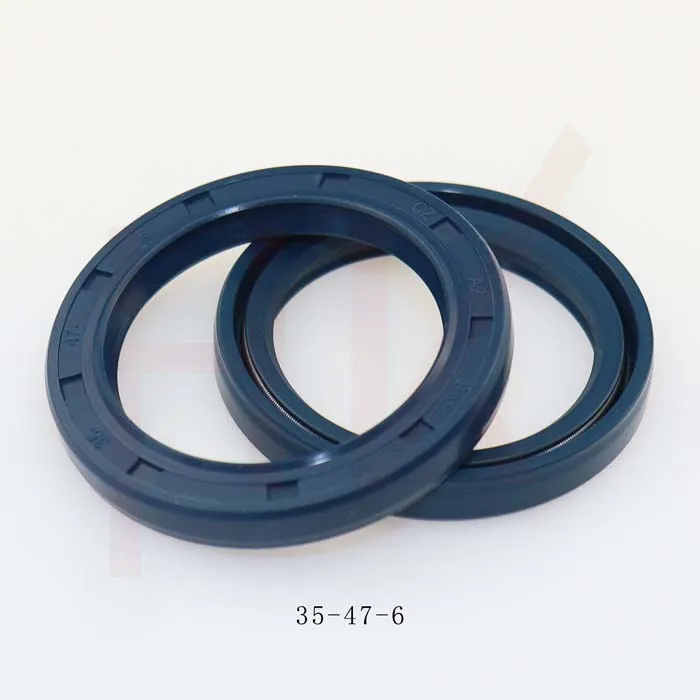Nov . 16, 2024 02:05 Back to list
gearbox seals
The Importance of Gearbox Seals in Machinery Maintenance
Gearbox seals play a crucial role in the performance and longevity of various machinery and automotive applications. As sealing mechanisms that prevent the leakage of lubricants and the ingress of contaminants, gearbox seals are essential components that ensure the efficient operation of gearboxes. Understanding their function, types, and maintenance is vital for anyone involved in machinery upkeep and automotive care.
Understanding Gearbox Seals
Gearbox seals are designed to fit into the spaces between the gearbox components, specifically where shafts enter and exit the gearbox housing. Their primary function is to retain lubrication within the gearbox while excluding dirt, dust, water, and other contaminants. This is critical because keeping the lubricant contained ensures that it can effectively reduce friction and wear between moving parts, which is essential for the gearbox's performance and longevity.
There are various designs and materials utilized for gearbox seals, each chosen based on the application and operating conditions. Common materials for these seals include rubber, polyurethane, and specialized thermoplastics, which are chosen for their durability and resistance to oils, chemicals, and varying temperatures.
Types of Gearbox Seals
1. Radial Seals These are the most common type of seals used in gearboxes. They function by creating a tight seal around the rotating shaft. The design allows the seal to conform to the shaft's surface, preventing oil leaks while also accommodating slight misalignments.
2. Axial Seals Unlike radial seals, axial seals are used to seal interfaces that are parallel to the axis of the shaft. These are less common in traditional gearboxes but are often used in specialty applications.
3. Mechanical Seals These seals consist of two flat surfaces that slide against each other to prevent leakage. While more complex than radial and axial seals, mechanical seals can handle higher pressures and vacuum conditions, making them suitable for specific heavy-duty applications.
4. Lip Seals A subtype of radial seals, lip seals have an extended lip that fits snugly against the shaft. This design offers better sealing capabilities and is commonly used in applications where the gearbox is subjected to contamination from dirt or water.
gearbox seals

Importance of Maintenance
Maintaining the integrity of gearbox seals is essential for machinery reliability
. A compromised seal can lead to lubricant leaks, resulting in insufficient lubrication within the gearbox. This can lead to increased friction, overheating, and ultimately, mechanical failure. Regular inspection and maintenance can help identify wear and tear on seals before they fail.When inspecting gearbox seals, technicians look for signs of damage such as cracks, tears, or signs of wear. Additionally, it's important to monitor for any fluid leakage around the seal area. Regularly replacing seals as part of preventive maintenance can save significant costs associated with gearbox repair or replacement.
Signs of Seal Failure
Recognizing the signs of gearbox seal failure is critical for timely intervention. Common warning signs include
- Oil Leaks If there are visible signs of oil leaking from the gearbox, it is an immediate indicator that the seals may be failing.
- Noise and Vibration Excessive noise and vibration during operation can indicate insufficient lubrication due to seal failure, leading to component wear.
- Overheating A rise in temperature within the gearbox can suggest that the lubricant has leaked out, resulting in poor heat dissipation and increased friction.
Conclusion
Gearbox seals are integral to the smooth operation and longevity of machinery across various industries. Understanding the different types of seals, their functions, and the importance of regular maintenance is essential for anyone involved in equipment management or automotive care. By ensuring that seals are properly maintained and replaced when necessary, companies can enhance the efficiency and reliability of their operations, reducing downtime and maintenance costs. As technology evolves, continuous advancements in sealing materials and designs will enhance the capabilities of gearbox seals, further improving machinery performance and durability. Regular attention to these components can lead to significant benefits in terms of reliability and operational efficiency.
-
TCN Oil Seal Metal Ring Reinforcement for Heavy Machinery
NewsJul.25,2025
-
Rotary Lip Seal Spring-Loaded Design for High-Speed Applications
NewsJul.25,2025
-
Hydraulic Cylinder Seals Polyurethane Material for High-Impact Jobs
NewsJul.25,2025
-
High Pressure Oil Seal Polyurethane Coating Wear Resistance
NewsJul.25,2025
-
Dust Proof Seal Double Lip Design for Construction Equipment
NewsJul.25,2025
-
Hub Seal Polyurethane Wear Resistance in Agricultural Vehicles
NewsJul.25,2025
-
The Trans-formative Journey of Wheel Hub Oil Seals
NewsJun.06,2025
Products categories
















